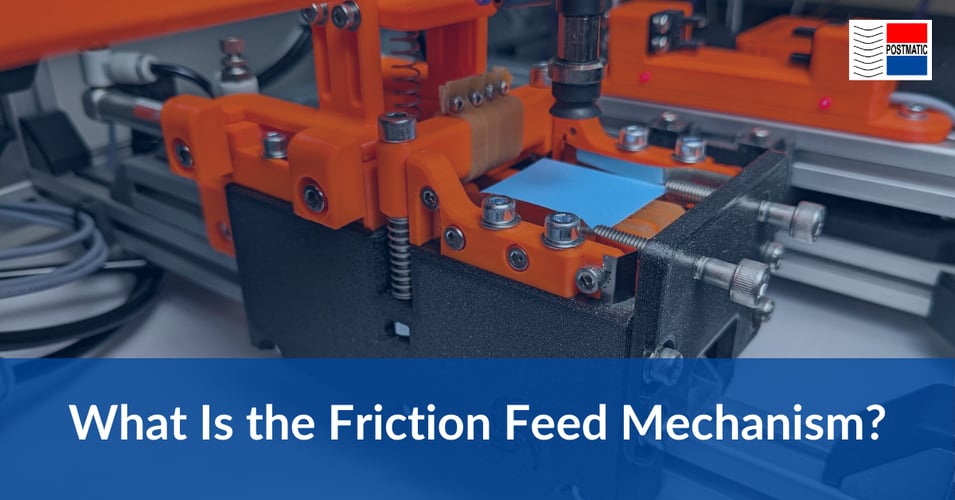What Is the Friction Feed Mechanism?

Table of Contents
In material handling and packaging, the friction feed mechanism is an essential component. This innovative system transports materials through various types of machinery by utilizing friction. It operates through a series of rotating wheels or belts that securely grip the material, guiding it through the process. It is particularly effective for managing flat materials such as paper, envelopes, and different types of packaging due to its reliable design.
The strength of this mechanism lies in its capability to handle a range of materials. By feeding the materials into the machinery at a controlled rate, it minimizes the risk of jams or misalignments. This reliability makes it a popular choice in many industries, including printing, mailing, and packaging, where accuracy and speed are crucial for meeting production demands.
For deeper insights, visit our friction feeder page or read our article on Paper Feeding Technology: Understanding the Friction Feed Method.
What Is the Friction Feed Method?
Unlike vacuum or suction feed systems (which rely on airflow), the friction feed method uses the frictional force between specialized feed wheels and the material's surface. This is beneficial for various applications, as it allows for smooth and reliable material feeding.
The advantages of the friction feed method include:
- Versatility in material handling: It accommodates a wide range of materials, from lightweight sheets and films to thicker substrates, making it suitable for diverse industrial applications.
- Cost-effectiveness: Friction feed systems typically have simpler designs than other feeding methods, leading to lower initial investment costs and reduced operational expenses.
- Low maintenance requirements: With fewer moving parts and less reliance on complex mechanisms, these systems generally require less frequent maintenance, allowing operators to focus on productivity.
How Does a Friction Feeder Work?
A friction feeder works by employing a sequence of rotating wheels or belts. As these components move, they create friction with the material, driving it forward at a controlled pace. This process ensures precise alignment and spacing, critical for high-speed operations.
The feeder's design allows for easy adjustments, accommodating different material sizes and thicknesses. This adaptability makes it an indispensable tool in various industrial applications.
What Is a Friction Feeder Machine?
A friction feeder machine is a specialized device that utilizes the friction feed method to process materials. It is essential in industries requiring quick and accurate feeding of items such as paper, cardboard, and plastic.
Key features of a friction feeder machine include:
- Adjustable feed speed and pressure
- Capability to handle a wide range of materials
- Compact design for easy integration into existing systems
What Is the Function of a Feeder Machine?
The primary function of a feeder machine is to automate the process of feeding materials into a production line. By doing so, it enhances productivity, reduces manual labor, and minimizes errors. Feeder machines are crucial for maintaining a steady flow of materials. Equipped with sensors and controls that adjust the feeding rate, they accommodate the specific needs of each production task.
What Is the Friction Transfer Method?
The friction transfer method uses friction to transfer materials from one stage of production to another. It is crucial in processes where precision in material handling is required, such as in printing or packaging lines. It ensures steady movement without slippage, maintaining the alignment of the material throughout the process.
Conclusion
Understanding the friction feed mechanism and its applications is crucial for optimizing material handling and processing in various industries. Whether you work in printing, packaging, or manufacturing, incorporating a reliable friction feed system will enhance operational efficiency and output quality. For a deeper understanding, these friction feed method PDF documents offer detailed insights into technical specifications, operational mechanisms, and applications. They include setup procedures, troubleshooting tips, and optimization strategies.
To explore how our solutions will benefit your operations, contact us today for a consultation. Discover why our friction feeder solutions are trusted by industry leaders.






